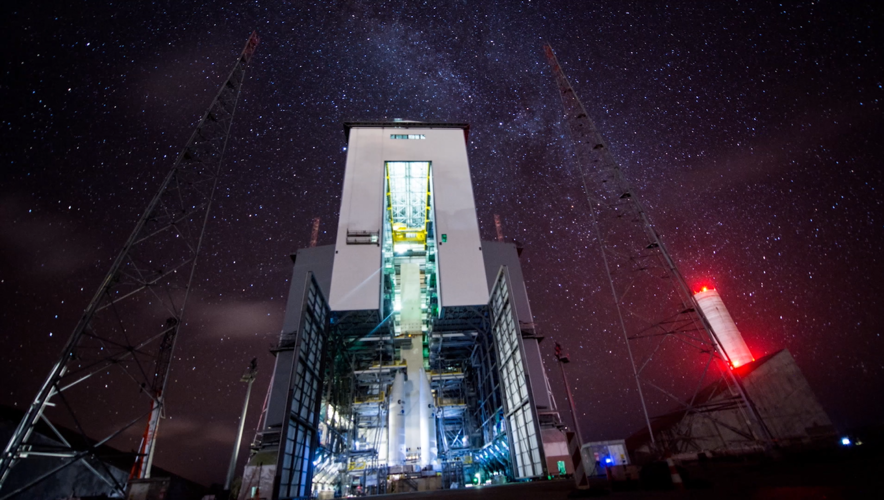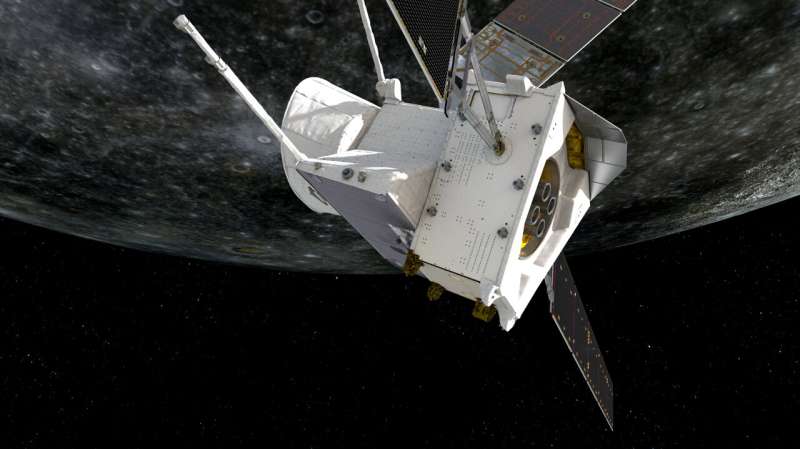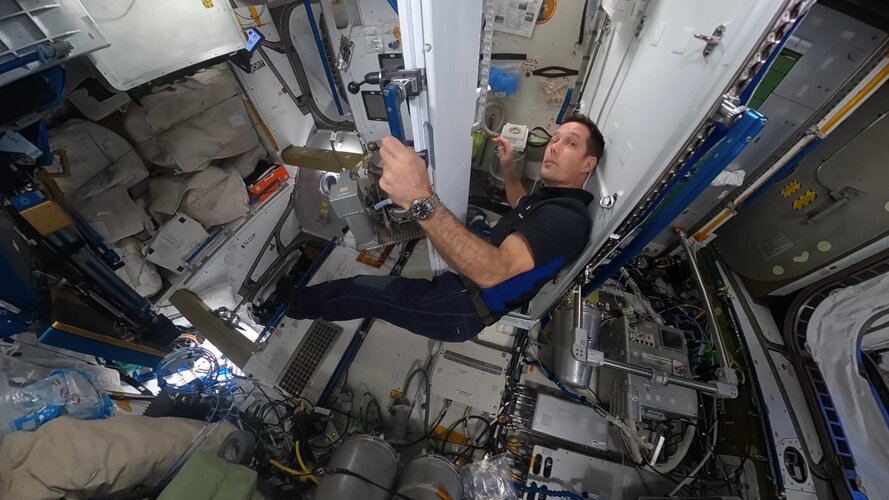
Copernical Team
Ariane 6 launch complex inaugurated at Europe’s Spaceport

The new launch complex built for Europe’s upcoming Ariane 6 rocket is inaugurated at Europe’s Spaceport in French Guiana.
ESA orbiter will encounter Mercury October 1

The ESA/JAXA BepiColombo mission to Mercury will make the first of six flybys of its destination planet on 1 October before entering orbit in 2025.
Hot on the heels of its last Venus flyby in August, the spacecraft's next exciting encounter is with Mercury at 23:34 UTC on 1 October (01:34 CEST 2 October). It will swoop by the planet at an altitude of about 200 km, capturing imagery and science data that will give scientists a tantalizing first taste of what's to come in the main mission.
Space for our Planet: Space Solutions for a Sustainable World

At ESA, we believe that we have a responsibility to use our space technologies, applications and services to benefit planet Earth and humankind. Some examples of how we do this are now on display in Paris and Brussels at a new exhibition called Space for our Planet: Space Solutions for a Sustainable World.
Node 3 | Space Station 360 (in French with English subtitles available)
 Video:
00:03:19
Video:
00:03:19
ESA astronaut Thomas Pesquet takes you on a tour of the International Space Station like no other. Filmed with a 360 camera, the Space Station 360 series lets you explore for yourself alongside Thomas’s explanation – episode six is NASA’s Node-3, also known as Tranquility.
Node 3 has cylindrical hull 4.5 m in diameter with a shallow conical section enclosing each end. It is almost 7 m long and, together with the Space Station’s observatory Cupola, weighed over 13.5 tonnes at launch. Built in Europe, Node 3 houses the life-support equipment, the toilet and equipment racks.
Follow Thomas:
Nation to deploy solar observation satellite
 China plans to launch its first solar observation satellite next month, according to a project insider.
Wang Wei, deputy director of the Shanghai Institute of Satellite Engineering at the Shanghai Academy of Spaceflight Technology, and project manager of the satellite, told China Daily on Sunday that the spacecraft is scheduled to be put into orbit from the Taiyuan Satellite Launch Center
China plans to launch its first solar observation satellite next month, according to a project insider.
Wang Wei, deputy director of the Shanghai Institute of Satellite Engineering at the Shanghai Academy of Spaceflight Technology, and project manager of the satellite, told China Daily on Sunday that the spacecraft is scheduled to be put into orbit from the Taiyuan Satellite Launch Center Hubble shows winds in Jupiter's Great Red Spot are speeding up
 Like the speed of an advancing race car driver, the winds in the outermost "lane" of Jupiter's Great Red Spot are accelerating - a discovery only made possible by NASA's Hubble Space Telescope, which has monitored the planet for more than a decade.
Researchers analyzing Hubble's regular "storm reports" found that the average wind speed just within the boundaries of the storm, known as a hi
Like the speed of an advancing race car driver, the winds in the outermost "lane" of Jupiter's Great Red Spot are accelerating - a discovery only made possible by NASA's Hubble Space Telescope, which has monitored the planet for more than a decade.
Researchers analyzing Hubble's regular "storm reports" found that the average wind speed just within the boundaries of the storm, known as a hi Exotic mix in China's Moon Rocks
 On 16 December 2020 the Chang'e-5 mission, China's first sample return mission to the Moon, successfully delivered to Earth nearly two kilograms of rocky fragments and dust from our celestial companion. Chang'e-5 landed on an area of the Moon not sampled by the NASA Apollo or the Soviet Luna missions nearly 50 years ago, and retrieved fragments of the youngest lunar rocks ever brought back for a
On 16 December 2020 the Chang'e-5 mission, China's first sample return mission to the Moon, successfully delivered to Earth nearly two kilograms of rocky fragments and dust from our celestial companion. Chang'e-5 landed on an area of the Moon not sampled by the NASA Apollo or the Soviet Luna missions nearly 50 years ago, and retrieved fragments of the youngest lunar rocks ever brought back for a Masten Space Systems partners with AdaCore to land on the Moon's South Pole
 When Masten Space Systems was awarded a NASA contract to land scientific payloads on the Moon, the company chose to work with AdaCore's software development and verification tools for its XL-1 Lunar Lander spacecraft. Masten Space Systems will use the Ada and SPARK programming languages and AdaCore's GNAT Pro integrated development environment and SPARK Pro static analysis verification tools in
When Masten Space Systems was awarded a NASA contract to land scientific payloads on the Moon, the company chose to work with AdaCore's software development and verification tools for its XL-1 Lunar Lander spacecraft. Masten Space Systems will use the Ada and SPARK programming languages and AdaCore's GNAT Pro integrated development environment and SPARK Pro static analysis verification tools in Russia, US plan to make more movies in space
 Russia and the United States are ready to cross new frontiers for filming movies in space as a way to promote growing commercialization of orbital spaceflight and beyond.
Russia's space agency, Roscosmos, plans to launch a Russian actress, film director and cosmonaut to the International Space Station early next month to produce the first full-length feature film shot in space, with a work
Russia and the United States are ready to cross new frontiers for filming movies in space as a way to promote growing commercialization of orbital spaceflight and beyond.
Russia's space agency, Roscosmos, plans to launch a Russian actress, film director and cosmonaut to the International Space Station early next month to produce the first full-length feature film shot in space, with a work NASA seeks input from potential partners on next generation astromobile
 When astronauts journey to the Moon aboard the Orion spacecraft and Space Launch System (SLS) rocket beginning with the Artemis II mission, they will travel by more traditional ground transport as they head to the launch pad to board their spacecraft.
NASA is seeking input from industry through a Request for Information on the opportunity for private companies to work with NASA and either
When astronauts journey to the Moon aboard the Orion spacecraft and Space Launch System (SLS) rocket beginning with the Artemis II mission, they will travel by more traditional ground transport as they head to the launch pad to board their spacecraft.
NASA is seeking input from industry through a Request for Information on the opportunity for private companies to work with NASA and either 